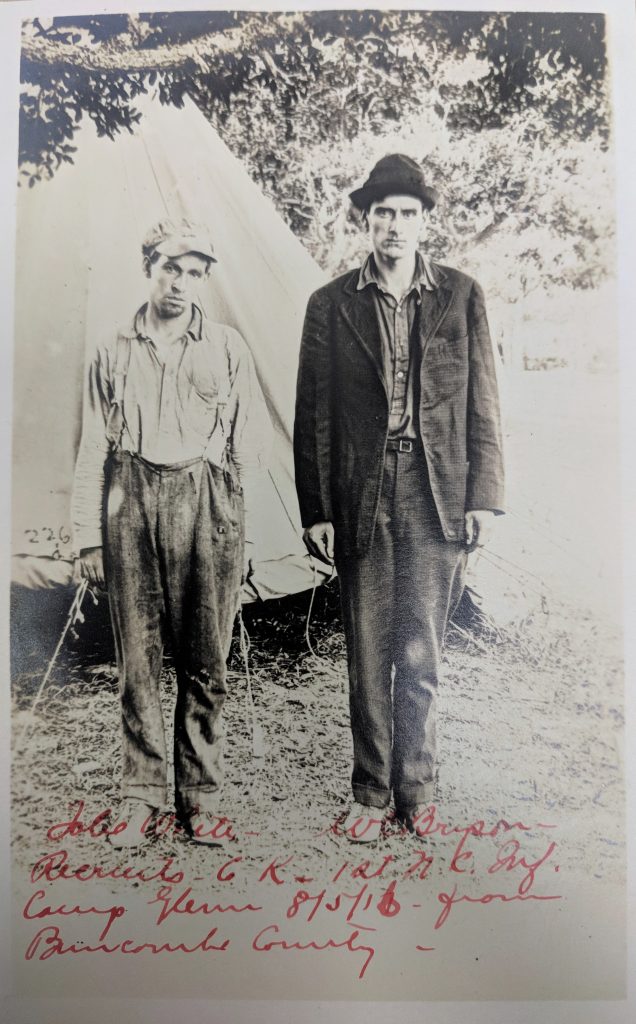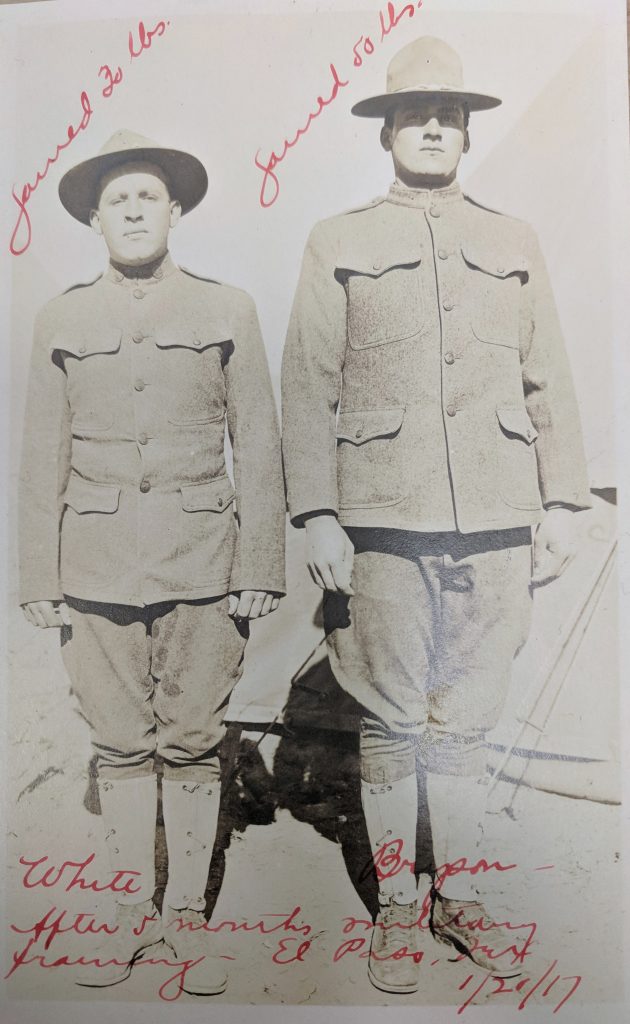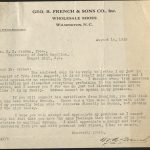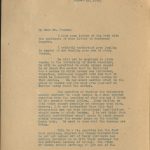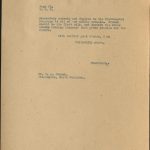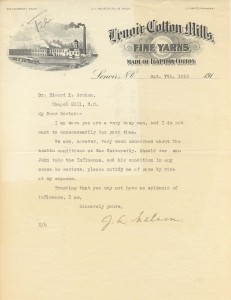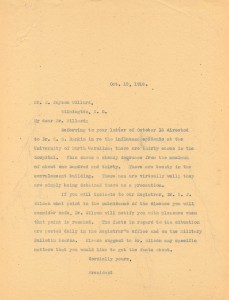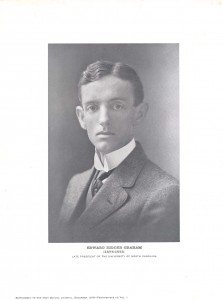During a recent renovation project at Wilson Library, we came across a couple of photographic postcards that had been set aside. Based on a note left with the photographs, it appeared that the items had probably been separated from the University Papers; however, when we tried to find corresponding folders or items in the collection, we were unsuccessful. Thus began our most recent processing mystery.
The backs of the postcards are blank, which leads us to believe that they were enclosed with a letter, likely sent to President Edward Kidder Graham in 1917. The photos are dated in 1916 and 1917 and show how two men have gained weight over the course of several months, before-and-after style.
We were of course curious about who these two men were and why their photos were sent to President Graham. Based on UNC records, it doesn’t look like either White or Bryson were ever students here, but after some searching, we did learn a few things.
After looking through census and military records, we found a little information about the first man — Jobe White. He was from Weaverville, N.C., born in February 1897 to Malissa White, and he had two brothers — Bradshaw and Hardy. We were less successful in discovering the identity of the second man. The writing on the postcard appears to show just initials and surname — W.C. Bryson — and we can guess that he was also from Buncombe County. While we did find records that gave us pause and made us wonder whether this was the same man, none contained enough information for us to make a confident match.
What we can say is this: both men were part of the First North Carolina Infantry in 1916 and 1917. They were both from Buncombe County. And they both gained a significant amount of weight over the course of five months of military training. (White gained 30 lbs. and Bryson gained 50.)
Based on the years and regiment, they were probably sent to Texas as part of the Mexican Border Campaign, also known as Pershing’s Punitive Expedition or the Pancho Villa Expedition. The First Regiment mustered at Camp Glenn, in Morehead City, during the first week of August 1916, arrived in El Paso in September 1916, and returned to North Carolina in early February 1917.
While we were able to find out all this just using the captions on both photographs, where they came from is still a mystery. Were they sent to President Graham enclosed with a letter? Why were they sent to him? Who sent them? If these men were never UNC students, how were they connected to the University? If you have any ideas, please let us know in the comments on this post or get in touch at archives@unc.edu.
For further reading:
State Archives of North Carolina, First North Carolina Infantry Regiment Panoramic Photograph. http://ead.archives.ncdcr.gov/AV_7005_First_North_Carolina_In_.html
National Archives, The United States Armed Forces and the Mexican Punitive Expedition: Part 1. https://www.archives.gov/publications/prologue/1997/fall/mexican-punitive-expedition-1.html

